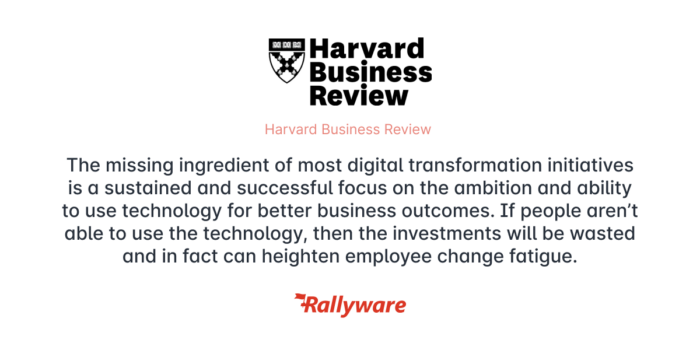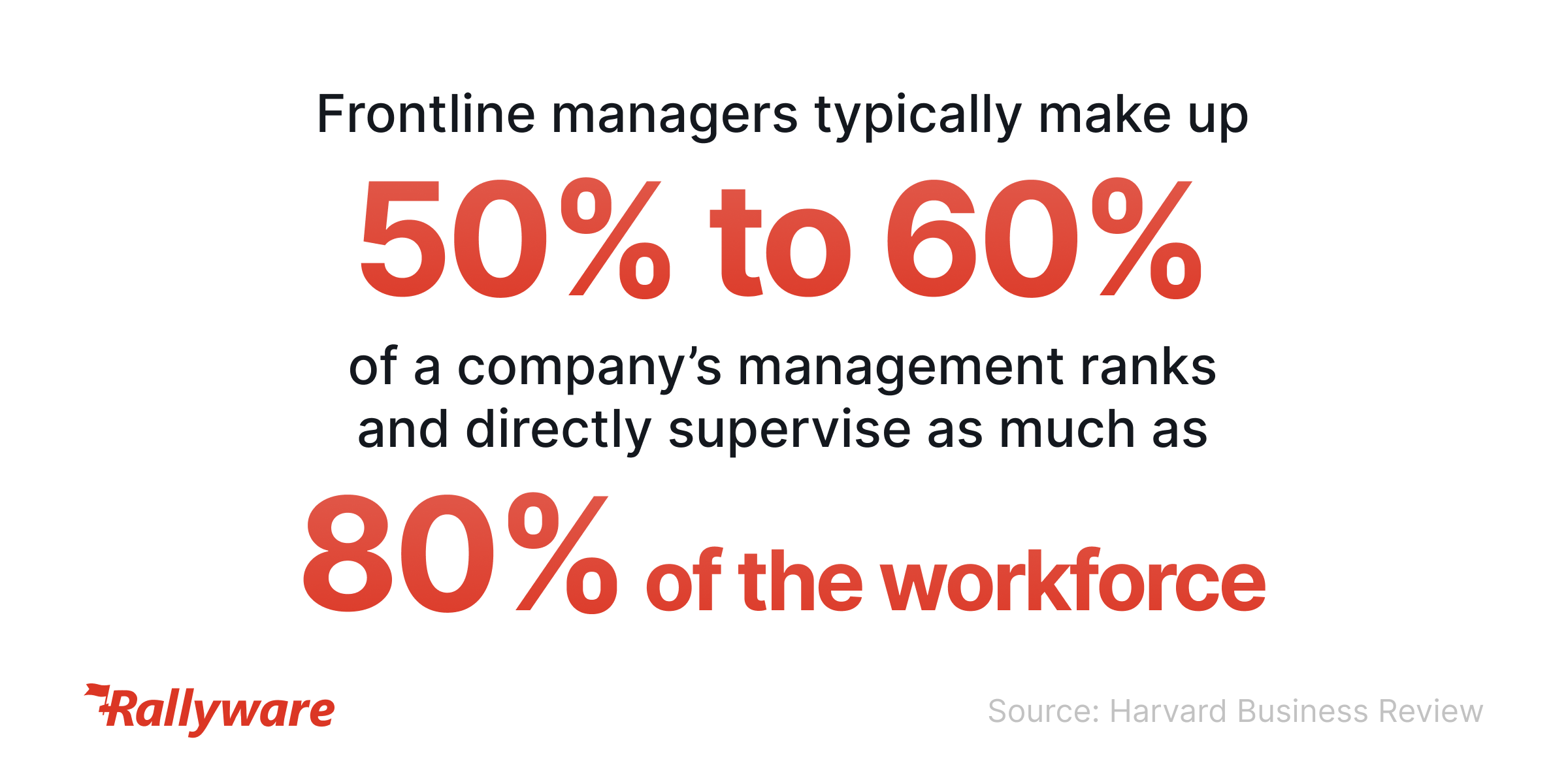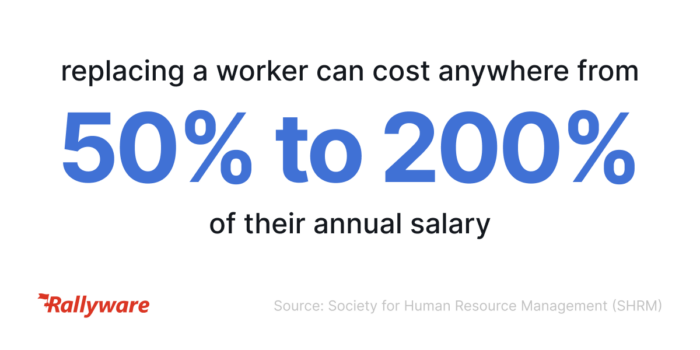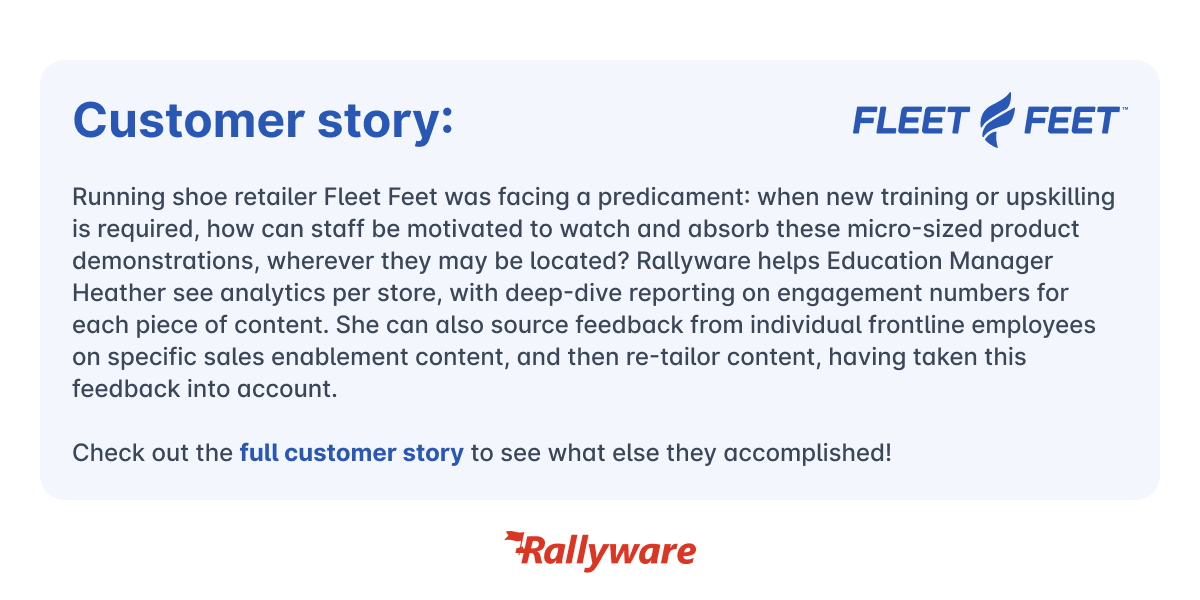Frontline Workforce Problems and How Enablement Technology Solves Them
While many of us have experienced the benefits of accelerated digital transformation in the last several years, there is one group of workers that has been largely left behind: the frontline workforce. Workforce enablement technology has simply not reached this group.
Millions of workers don’t have a desk or a computer to work from. Unfortunately, insufficient investment in the frontline experience will continue to ratchet up operating costs and reduce margins until organizations commit to realizing the benefits of frontline workforce enablement technology.
Of course, cheat codes may seem attractive — one-off solutions that address the symptoms of a problem rather than its root — intermittent, big-ticket incentives to drive engagement, or ad-hoc training sessions. These methods may produce temporary results but ultimately perpetuate the foundational disorder driving these problems in the first place.
To build business resiliency and improve outcomes, organizations with deskless workforces need technology tools that are specifically designed to meet the unique needs of their workforce. These include intuitive communication platforms and frontline employee training that actually resonates with the deskless workforce in one centralized experience.
Holistic workforce enablement technology is already how global market leaders are ensuring growth in this down economy. But the key to effective digital transformation for deskless workforces is, as HBR puts it, “a sustained focus on improving employees’ and leaders’ digital dexterity: the ambition and ability to use technology for better business outcomes. If people aren’t able to use the technology, then the investments will be wasted and in fact can heighten employee change fatigue.”

Today, organizations seeking to build real business value and resiliency with workforce enablement should be paying attention to three key frontline pain points and how the right technology can solve them.
Frontline leadership is burnt out because of bad legacy systems for communication, training, and execution.
Frontline managers are the undersung heroes of frontline work. Yet outdated communication, training, and execution systems have created significant barriers to facilitating high performance for their teams. Furthermore, legacy systems are preventing them from effectively serving as a link between HQ and the frontline.
The role of the frontline manager is more complicated than it may appear. Frontline leadership must disseminate vital information between teams, manage promotions and incentives, ensure operational excellence, and cultivate frontline skills and knowledge, all while overseeing day-to-day operations.
But the lack of scalable, centralized workforce enablement technology has made it nearly impossible for frontline managers to do their jobs well.
Let’s dig a little deeper into where frontline managers sit in operational strategy and how technology can benefit or impede their impact.
Frontline managers typically make up 50% to 60% of a company’s management ranks and directly supervise as much as 80% of the workforce. They carry the vital responsibility of motivating and enhancing the morale of the associates who deliver services to customers. Their role in overseeing the implementation of a company’s business strategy is central to the organization’s success.

How? These managers act as a crucial feedback mechanism, allowing the HQ to stay updated on what’s happening at the ground level. This is precious business intelligence that most companies without effective communications systems are missing out on.
Now let’s zoom out. Businesses today face unexpected shifts in technology and markets, disruptions in traditional business models, and pressures from customers, suppliers, and competitors. To survive and thrive, organizations must build a culture of adaptability and responsiveness that goes beyond routine execution.
This means cultivating passionate drivers who question the status quo, tackle complex problems, and innovate.
Frontline managers play a vital role in creating such an organization. They are responsible for managing the majority of a company’s employees and have a significant impact on performance. Their level of engagement and energy influences the way they lead their team, creating a charged and aligned organization.
To support them in this complicated role, workforce enablement technology is key. An effective workforce enablement solution works as a bridge between the frontline manager, the frontline, and HQ by centralizing communication tools.
But more than simplifying and centralizing existing processes, a next-generation workforce enablement solution like a Performance Enablement Platform (PEP) automates a significant portion of the frontline manager’s stickiest problems, like engagement and productivity.
PEP scales the frontline manager’s capacity by orders of magnitude by enabling a level of personalization for each frontline associate impossible to provide by a single manager. Rather than the manager needing to check in with each individual about goals, engagement, and productivity, PEP automatically surfaces the most efficient behavior to drive company KPIs. This technology frees up the manager’s time from one-off problem-solving to holistic frontline management.
With new bandwidth to study the analytics PEP provides, frontline managers can engage in the strategic thinking required to tackle more complex business decisions and help build a resilient organization.
Frontline turnover and replacement costs remain high due to low engagement.
Low frontline associate engagement is a widespread problem in many organizations, with studies showing that only a small percentage of employees are highly engaged in their work.
There are several reasons for this, including poor communication, lack of training and development opportunities, and a lack of recognition and appreciation. Frontline associates often feel disconnected from the company’s mission and goals, leading to feelings of disengagement and apathy.
One of the major impacts of low engagement is high turnover rates. When frontline associates are disengaged, they are more likely to look for other job opportunities or quit without notice. This creates a significant problem for companies; replacing employees is incredibly costly and increasingly difficult in today’s labor market.

High turnover rates can also impact the quality of service or products that a company delivers to its customers. When frontline associates are constantly leaving, there is a lack of consistency in the level of service provided. This can lead to negative customer experiences and ultimately impact the company’s reputation and bottom line.
Additionally, high turnover can create a sense of instability and uncertainty among remaining staff members, leading to decreased motivation and engagement.
Companies must prioritize creating a culture of engagement that focuses on open communication, training and development, and recognition and appreciation. By doing so, they can retain top talent, increase productivity, and provide exceptional service to their customers.
Workforce enablement technology can help solve the problem of low frontline associate engagement and its associated impacts on turnover by providing a platform for better communication and feedback between frontline associates and their managers.
By providing frontline associates with easy access to the information and resources they need to do their jobs effectively, workforce enablement technology can help boost engagement levels and reduce turnover rates. Associates are more likely to feel connected to their organization and its goals when they have access to the information and resources they need to perform their jobs well. This, in turn, can lead to increased job satisfaction, motivation, and a sense of purpose in their work.
Workforce enablement technology can also help organizations create a culture of recognition and appreciation by providing tools for managers to recognize and reward their employees for a job well done. These tools can include gamification features that allow associates to earn badges or other rewards for completing tasks, as well as recognition features that allow managers and colleagues to publicly recognize and celebrate individual and team achievements.
As a tool, gamification is a pretty powerful engagement booster. Our 2023 Annual Global Sales Force Report found that, among Rallyware’s customer community, gamification was especially effective in terms of retention, in 2022. Data-driven sales gamification led to 81% higher retention of salespersons, compared to those who were not interacting with gamified features.

Digitalization of offline resources will not be enough to enable the frontline to successfully drive KPIs.
Many organizations have recognized the need to digitize their operations and processes to remain competitive in today’s business environment. This includes digitizing their training materials, manuals, and other resources that were previously only available in physical formats.
However, simply transferring offline resources into digital formats is not sufficient for delivering a truly data-driven workforce enablement solution.
A data-driven workforce enablement solution goes beyond just digitizing offline resources. It involves leveraging data to inform decisions and provide actionable insights for both frontline associates and their managers.
By using data analytics, organizations can gain a better understanding of their workforce’s performance, identify areas for improvement, and develop targeted training and development programs that are tailored to individual needs.
A data-driven workforce enablement solution also provides managers with the tools they need to effectively manage and develop their frontline associates. This can include dashboards and other reporting tools that allow managers to track their team’s performance, monitor progress towards key goals, and identify potential areas of risk or opportunity.
With this information, managers can make decisions that are informed by real-time data and insights.
Finally, a data-driven workforce enablement solution can help organizations build a culture of continuous learning and improvement. By providing associates with access to real-time feedback and learning resources, organizations can empower their workforce to take control of their own development and growth. This not only helps associates build new skills and improve their performance but also fosters a sense of ownership and accountability in their work.
While transferring offline resources into digital formats is an important first step in digitizing operations, it is not sufficient for delivering a truly data-driven workforce enablement solution.
A data-driven approach involves leveraging data to inform decisions and provide actionable insights, providing managers with the tools they need to manage and develop their teams effectively, and empowering associates to take control of their own learning and growth.
By adopting a data-driven workforce enablement solution, organizations can create a more engaged and productive workforce that is better equipped to meet the challenges of today’s business landscape.
Now, as we step into 2024 and beyond, it’s crucial to prioritize investments in workforce enablement technology, ensuring your frontline workforce is well-equipped for sales success.
To see how a smart Performance Enablement Platform (PEP) can help your organization solve its frontline workforce challenges with AI, sign up for a demo!
News and Insights on Workforce Training & Engagement
We’re among top-notch eLearning and business engagement platforms recognized for effective training and talent development, helping to empower distributed workforces
Subscribe
